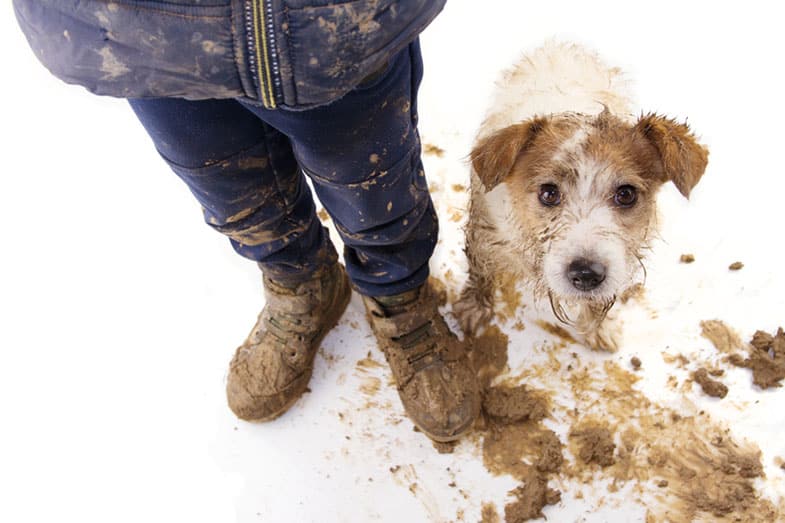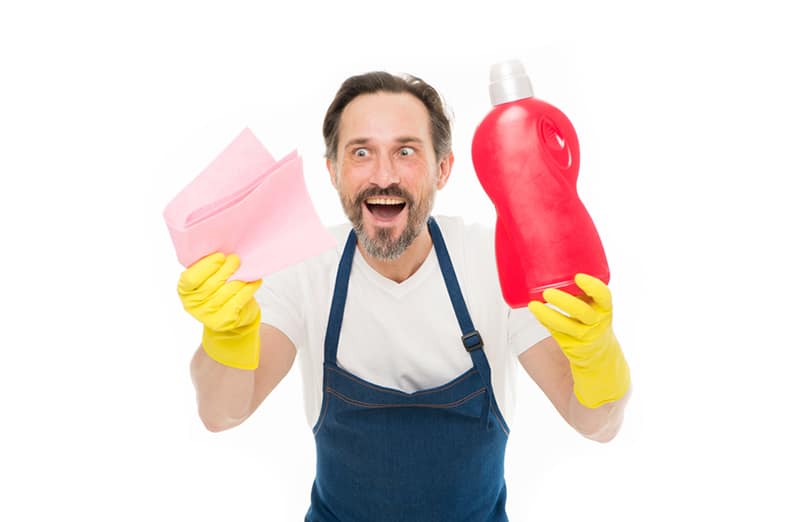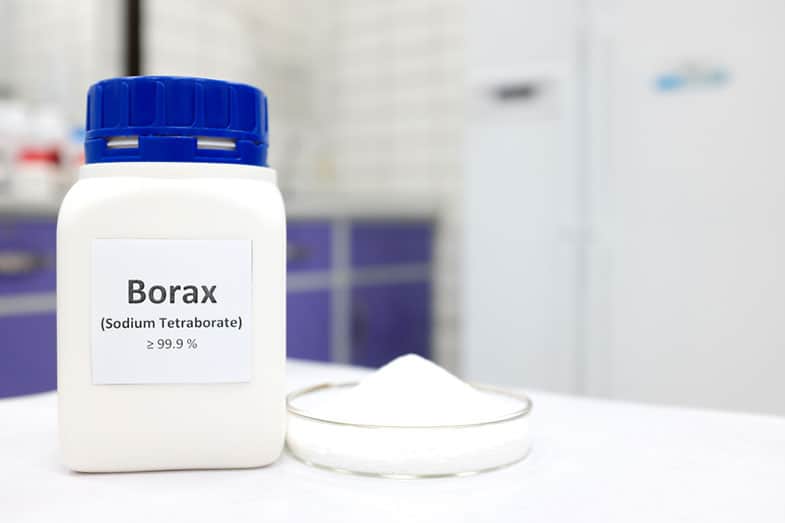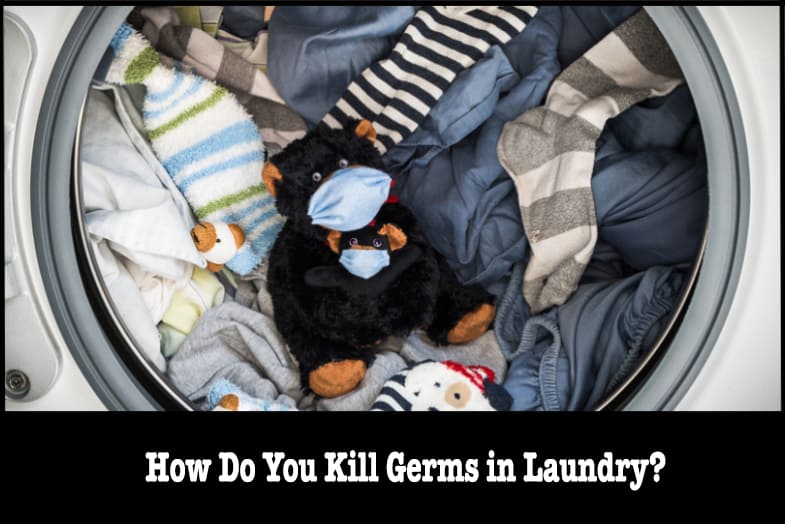Removing dirt from the laundry is one hassle, and sanitizing clothes is another. Bacterial and viral infections are very common and usually spread from clothes. This is why we need to disinfect laundry in addition to cleaning it with detergent.
It is necessary to use the correct disinfecting method to kill germs in the laundry. If you do not do so, you will end up having even dirtier clothes after the wash. There are several methods to kill germs in the laundry. You can use products that contain bleach or others without bleach methods, like vinegar, pine oil, etc.
Other than clothes, germs are also present in the washing machine. Therefore, it is necessary to keep it clean and disinfect it often. Stay with me to the end to find some of the easiest methods to kill germs from clothes and washing machines.
What is Present in the Laundry?

Bacteria and other microorganisms are present everywhere. If you do the laundry right away, you can get rid of the various infection-causing organisms. However, when the dirty and sweaty clothes sit in the hamper for days, and sometimes for weeks, these organisms start growing there.
The bad smell of clothes is due to sweat and dirt. Bacteria and microorganisms sometimes do not give away bad odors. Therefore, merely by smelling the clothes, you cannot determine whether the clothes contain germs or not.
Clothes like undergarments and children’s clothing can be the dirtiest as they contain more germs and bad bacteria than any other piece of laundry. Therefore, you need to be careful while washing the clothes. In order to minimize the spread of germs, it is good to wash clothes separately that contain more sweat and grease.
Other than that, towels should also be kept and washed separately. Since towels remain damp for longer, the chances of bacteria surviving in them are higher.
Read More: How Laundry Detergents Works?
Can I Kill Germs with Laundry Detergent?

Laundry detergent combined with super-hot water is the best way to kill germs. However, there are some limitations to this method, as some clothes cannot survive hot water. Also, hot water sometimes makes the detergent ineffective. Therefore, it is necessary to have a balance between things.
You can use hot water up to 60 degrees Celsius to make the detergent effective against bacteria and other microorganisms. In addition to detergent, you can also use oxygen-based bleach to get the best results.
You can soak the clothes in oxygen bleach for a while to decontaminate the laundry. For that, fill half the bucket with water and add a cup of bleach to it. Mix it well, and then add clothes to it. You have to keep it there for at least an hour to get all the germs and bacteria killed.
After that, give the clothes a final touch of water to get all the chemicals removed. Later on, you can put them in the dryer. There are some clothes that should not be put in the dryer; you need to be careful about them. Other than that, you can also dry the clothes in the natural sunlight. Sunlight kills more germs than any other natural or synthetic chemicals.
Read More: Does Detergent Kill Fleas and Other Nasty Bugs?
Laundry Disinfectants
Chlorine Disinfectant
Chlorine disinfectant can also be called chlorine bleach, in other words. Bleach is effective in the water of all temperatures. You can easily disinfect the clothes by using chlorine disinfectant in hot, warm, or cold water. The temperature has nothing to do with bleach; rather, it affects the clothes that you wash.
If the percentage of Sodium hypochlorite is between 5.25 and 6.15, the bleach is safe and effective to be used on clothes.
For use, you can add about ¾ cup of bleach to the bleach dispenser. If there is no dispenser, you can add it to the drum of the washer before adding the load. This way, bleach gets the time to be dissolved in the water. This amount will work great for clothes that are lightly soiled. However, if your clothes are heavily soiled, you can add ¼ cup of bleach to get the best results.
After that, add the laundry detergent as usual to the washing machine and run the wash cycle. Bleach is effective at removing stains and washing away bacteria from the clothes. It is also a good method to keep the washing machine clean to prevent the spread of germs and illnesses.
Pine Oil Disinfectant
Pine oil is an essential oil that has been used for medicinal purposes for centuries. It has an amazing scent that refreshes everything it falls on. It also has disinfecting properties that make it best for killing germs from clothes.
These disinfectants are also great at disinfecting laundry. You can use it in both hot and warm water. It works effectively in either of these. Pine oil is a natural substance that can easily wash away germs from both white and colored clothes, rendering them fresh and bright.
The product that you purchase from the market should contain at least 80% pine oil for it to be effective against germs and other microorganisms. You can add the product to the washing machine at the beginning of the cycle.
Pine oil leaves a smell on the clothes that cannot be removed easily. Also, you should not use pine oil disinfectant on the clothes of a person who is already facing skin allergies and other such issues.
Phenol Disinfectant
Due to its good penetrating power in organic materials, phenol can be used as a disinfectant. They are highly effective against bacteria. The efficiency increases when phenolic disinfectant is used in hot or warm water. They are completely safe to be used on white and colored clothes.
You should beware of using only the recommended amount of disinfectant, as long-term exposure to it can cause several skin problems and skin damage. You can simply add this disinfectant to the rinse water when the water is hot or warm.
You should be careful not to use it on certain fabrics. Phenol is a strong chemical that is likely to damage clothes.
Kill Germs without Bleach
Bleach indeed works great in disinfecting clothes, but it can be really harsh on the clothes and your skin. Therefore, it is better to avoid bleach and look for a natural alternative that can be less toxic to your clothes. Here are some natural ingredients that you can use to kick away infectious bacteria and viruses from your clothes.
Borax

Borax is also known as sodium borate. In powder form, it comes as a white chemical that readily dissolves in water. You can use it as a disinfectant. Borax works great in hot water as the water activates the cleaning power of the compound.
For using it:
- Begin by adding hot water to the washing machine.
- Once it is filled, add laundry detergent and clothes.
- Take about half a cup of borax and add it to the wash cycle.
This way, borax will be completely activated and spread evenly on the clothes to kill the germs.
Essential Oils

Essential oils are prepared with natural volatile compounds that are obtained from plants. They can be used for several medicinal purposes. However, their antiseptic and disinfecting properties cannot be denied. You can use essential oils in place of fabric softener.
Simply pour a cup of pine oil into the fabric softener dispenser or directly into the drum in case of the top-load washing machine. Every oil has a distinctive odor that you may or may not like.
Other than that, you can drop a few drops of lavender oil. Tea tree oil also has many benefits. Two tablespoons of it is more than enough to fight pathogens in the clothes.
Thyme oil is another beneficial essential oil that has powerful disinfecting properties. Adding a tablespoon to the medium load of the washing machine can do magic both in terms of fighting pathogens and softening the clothes.
White Vinegar

Vinegar is a go-to disinfectant, as it harms neither our clothes nor our skins. Vinegar can be used to kill all the germs from the laundry. Other than that, it can also be used to disinfect the washing machine, which you will learn later in this article.
The presence of an organic compound called acetic acid in white vinegar makes it effective against bacteria and viruses. White vinegar also works as a deodorizer that makes the clothes soft. It can be used on both colored and white clothes.
In addition to killing germs, vinegar also softens and brightens the clothes. Thus, you can get both bleach and fabric softener properties in a single ingredient. The refreshing smell it gives to clothes will always make you choose white vinegar over anything.
Hydrogen Peroxide
Other than preventing skin infection and treating minor cuts, people do not use hydrogen peroxide for any other purpose. Hydrogen peroxide also has bleaching and antiseptic properties. Since it is a bleaching agent, we cannot use it on colored fabrics. It is good for white clothes only.
Hydrogen peroxide is such a great disinfectant for clothes, but so many people are clueless about it. You can keep your white clothes germ-free just by adding a cup of hydrogen peroxide to the clothes in the washing machine once it is filled with water. Run the normal wash cycle.
Do not forget to do a spot test with hydrogen peroxide before using it.
Read More: Is Antibacterial Detergent Really Worth It?
Heat
Heat is the best tool against all these infectious pathogens. High temperature makes it easier to fight bacteria. This is why it is usually recommended to wash clothes in hot water, provided that the clothes are sensitive to heat.
Most of the pathogens die when you use hot water. If you do laundry in cold water, heat in the dryer plays its role. In some washing machines, you will find the disinfectant cycle. It runs at a very high temperature, thus killing all the germs and pathogens on the clothes.
How to Disinfect Washing Machine?

Sometimes, the clothes are free of germs, but the presence of mold and mildew in the washing machine moves to clothes and invades the area. In such a situation, it is necessary to keep the washing machine clean along with the clothes.
There is a very simple way to disinfect your washer. You just need a single natural ingredient to get rid of the microorganisms in the washing machine.
- After washing the laundry, remove all the water from the washing machine. Add about a cup of vinegar or bleach to the washing machine, and then run an empty cycle. This will keep all the infectious microorganisms away. You can do this once a week to ensure hygiene.
- There is a plastic ring or rubber around the door of the washing machine. By using an anti-bacterial cleaner, you can disinfect it. Make sure to do this every week.
- The lint filter in the washing machine should also be cleaned after every wash. If it seems difficult, you can clean it after a few days. This not only cleans the germs away but also increases the efficiency of the machine.
- If you do not want molds to grow in the washing machine, you need to adopt this habit – do not leave the door of the washing machine closed. When you close the door, the moisture is trapped inside. The door of the front-load washing machine contains a tight seal, which is necessary for such horizontal machines. This tight seal seals the moisture inside when the door is closed and thus encourages the growth of microorganisms. This is why you should keep the door open.
Read More: Is Liquid Detergent Bad for Washing Machine?
In Conclusion
Clothes do carry pathogens from different sources. Undergarments and children’s clothes contain infectious microorganisms. When such clothes are kept in the hamper for a longer time, they are likely to spread from one cloth to another.
Though detergent can fight pathogens, it is not very effective. Therefore, we need to look for a better solution to disinfect the clothes.
Bleach is great at fighting pathogens, but it is really harsh. Using it regularly can not only damage clothes but irritate your skin as well. Therefore, we need to look for some natural solutions.
Essential oils, vinegar, borax, and pine oil disinfectants are some amazing methods to fight pathogens. However, essential oils should be avoided if a pregnant woman, young children, or pets are at home.

